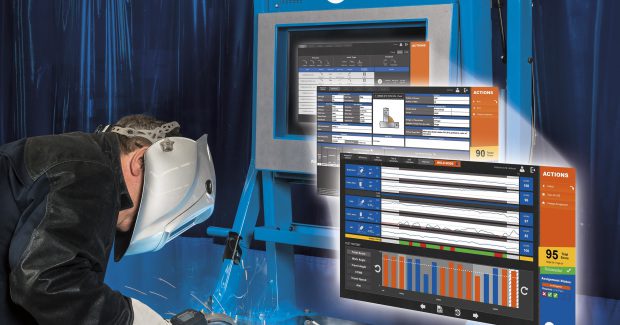How New Technology Can Help Address Welding Industry Shortage
Utilizing tools that provide more cost-effective and efficient recruiting, screening and weld training will aid companies in finding the right welding talent and reducing training timelines, placing qualified welding operators on the production floor in a timely manner.
Posted: December 3, 2014
According to the American Welding Society (Miami, FL), the welding industry will face a shortage of about 400,000 welding operators by 2024. Driving this growing need is a lack of incoming skilled welders, coupled with the fact that the estimated age of a welder in the United States today is 57.
These statistics probably aren’t news to most people involved with the welding industry. Most everyone in fabrication, manufacturing and welding education has heard these numbers. Many of them likely already feel these numbers. In response to this growing industry issue, welding equipment manufacturers are developing innovative technology to help address the shortage and make it easier and more cost efficient to recruit, screen, train and requalify welding talent in the industry.
WHY IT’S IMPORTANT
Advanced manufacturing technology is creating more uses and needs for welding. At the same time, new material developments are requiring a more educated and innovative welder workforce. Aging infrastructure also means that the U.S. market will see an increasing need for additional skilled welders to build, maintain and repair the infrastructure.
The combination of these factors results in a need for companies to be more competitive in screening, acquiring and maintaining a skilled welding workforce. It’s an issue that affects the health of the overall welding industry and related industries. So the question remains: How can schools and companies best draw talent to the welding industry, and how can companies more easily keep those welders trained and qualified once they are hired?
TURNING TO TECHNOLOGY
New and innovative technologies can help, and welding equipment manufacturers are stepping up with solutions to help address the welding operator shortage. One example of new technology aimed at helping address the problem is the LiveArc™ Welding Performance Management System.
http://youtu.be/edfBZx-SvCI
This system is designed to deliver a real-world, arc-on welding experience by using motion tracking technology. The motion-tracking cameras provide immediate feedback on technique parameters during initial simulation (practice) mode and also during live arc training mode.
The system uses a real welding power source with a MIG gun and offers a simulation or practice mode that creates muscle memory along with providing cost savings, since no welding coupons, wire or gas are needed. With the push of a button, operators can experience a real welding arc while transferring the learned muscle memory and proper welding technique into a real welding application.
The system also has a touchscreen interface that works with a welding glove on your hand, so operators can easily guide themselves through assignment selection and simulated welding runs to build their skills in the desired technique or position before moving to actual live arc training experiences. Once the operator is comfortable and is achieving good scores in practice mode, the system can be switched to live welding.
New technology like this benefits the industry by offering a faster, more cost-effective method for screening applicants and retraining current welders.
BENEFITS FOR COMPANIES
One of the biggest advantages of this type of technology — especially for large industrial customers — is the impact it can have on the screening and recruiting process. If a company has 100 applicants with a wide range of welding skills, perhaps only a handful of those applicants have the skill level that fits company needs.
A motion tracking training device like this can provide a fast and easy way to screen a large pool of applicants. The system can be used in simulation and live arc mode, reducing the need for internal welding resources for screening the skill sets of the applicants. The tool can provide a quick, objective evaluation of an applicant’s ability to weld to proper specifications. Customized assignments based on the company’s existing welding applications can be created to screen out candidates who may need additional training or who don’t have the fundamental skills the company seeks.
Companies can also use this type of technology to maintain or update the skills of their current welding operators, by creating specific training assignments based on existing welding operations. Using the tool to retrain operators to meet specific quality standards can help to improve weld consistency and reduce rework.
BENEFITS TO EDUCATION
Technology that makes training easier and more efficient also provides obvious benefits for welding education, because it can help instructors be more efficient and effective with their time in the classroom. The simulation and live arc welding mode gives students a solid welding technique baseline with less instructor interaction, so educators are able to provide quality for students requiring one-on-one instruction.
Instructors also have the ability to configure personalized assignments and technique parameters, with customized target values and limits for factors including travel angle, travel speed, aim and contact-tip-to-work distance. The system also lets them store student performance history and track improvement over time.
VALUABLE TECHNOLOGY TOOLS
In the quest to recruit and train more welding operators to meet current and future industry demands, new technologies and equipment will be an important part of the solution. Utilizing tools that provide more cost-effective and efficient recruiting, screening and weld training will aid companies in finding the right welding talent and reducing training timelines, placing qualified welding operators on the production floor in a timely manner.






